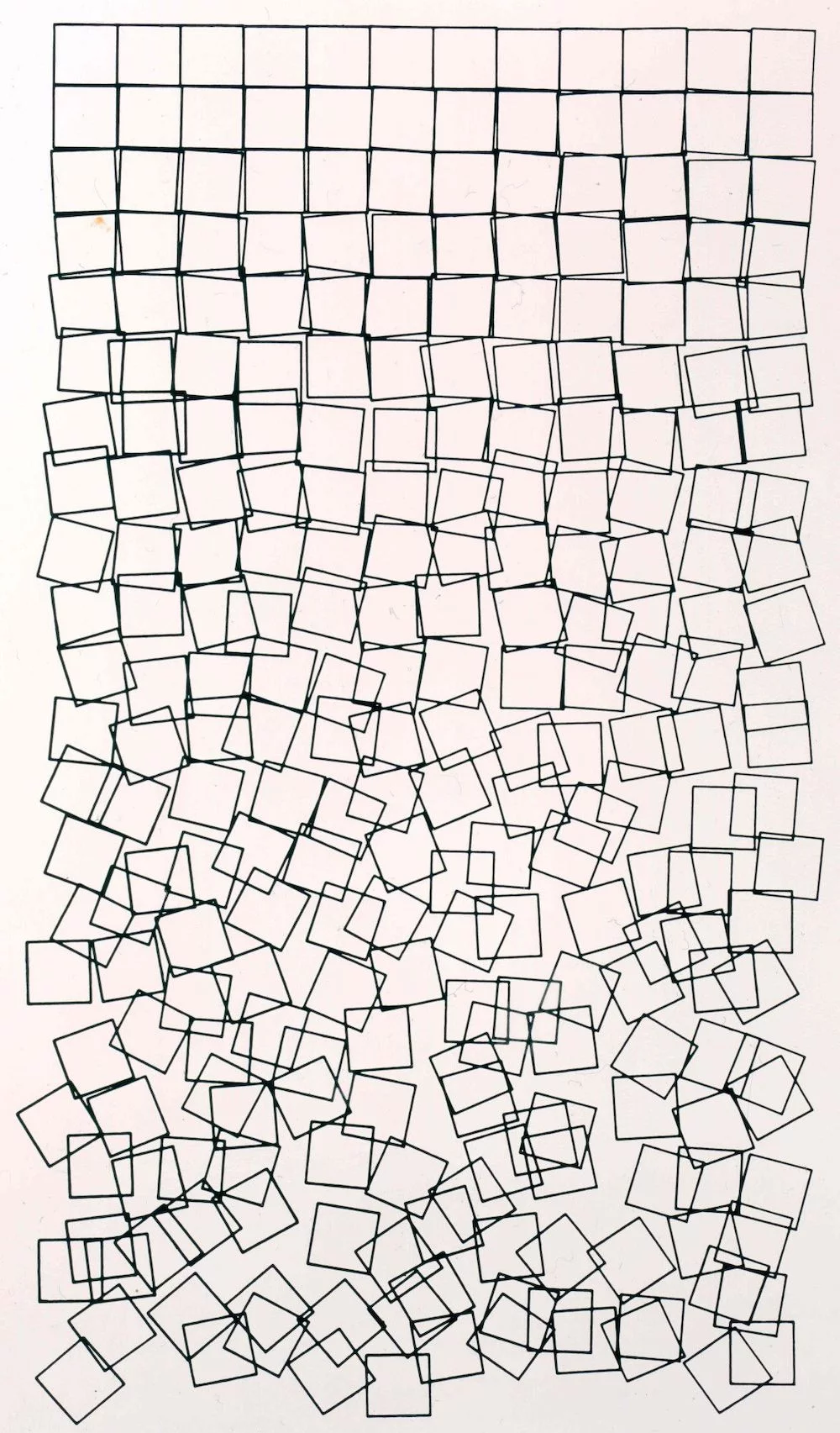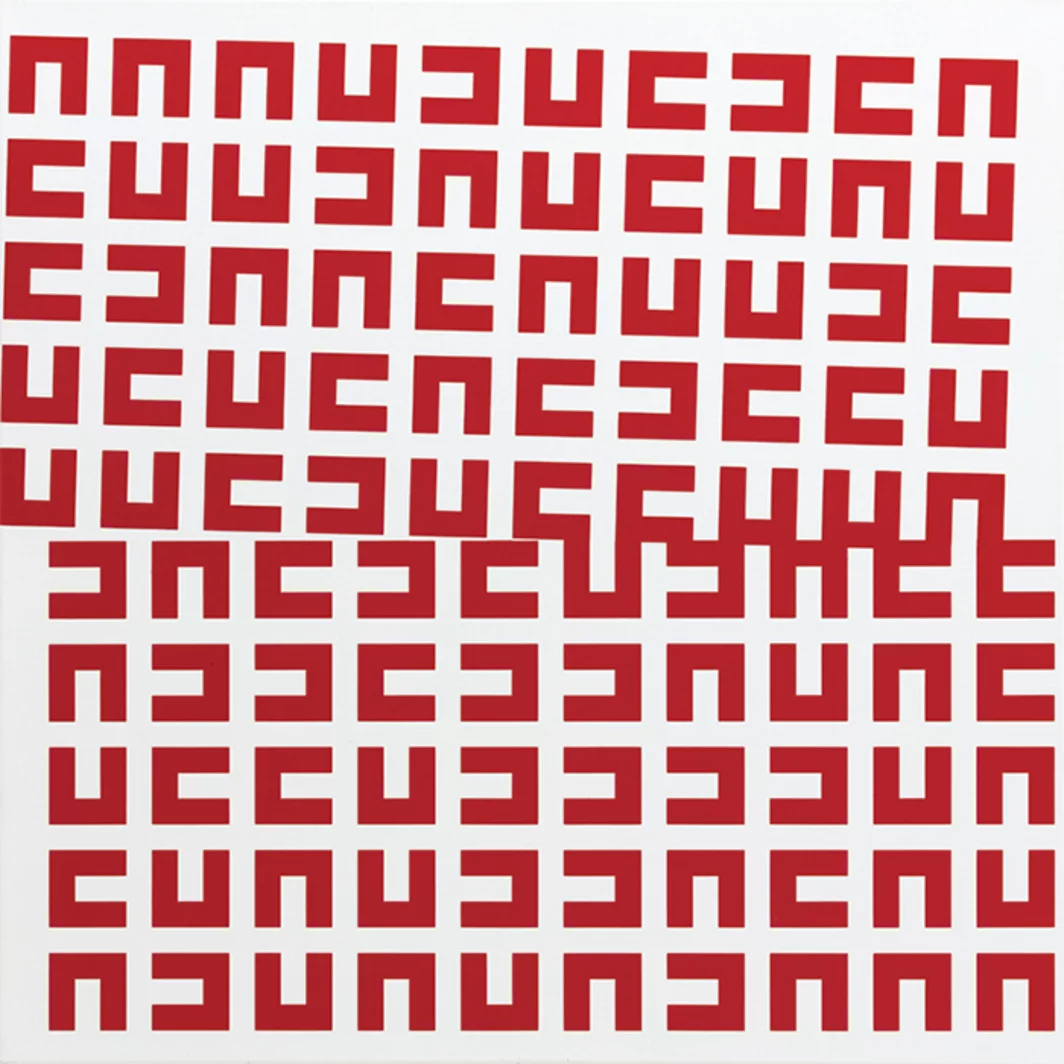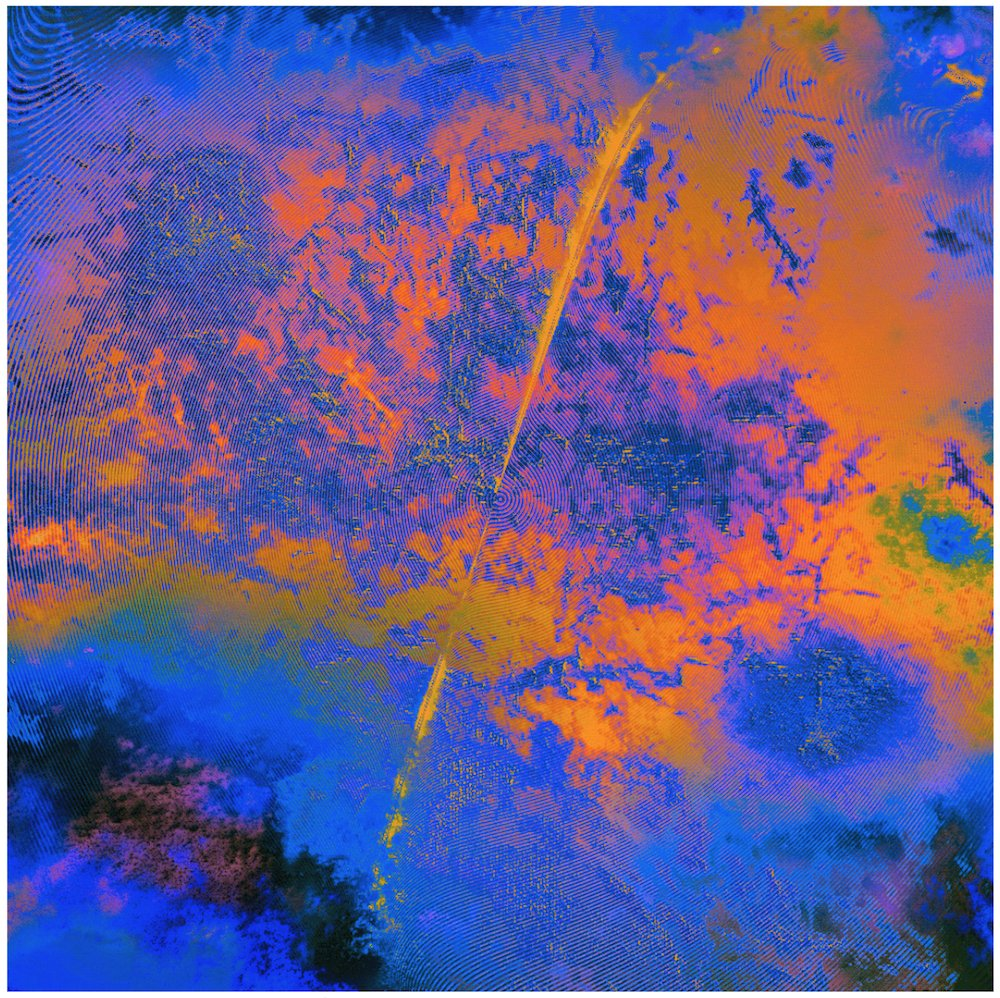... often by employing random/pseudo-random techniques for abstract creation within what is usually a somewhat specific scope. The final piece is a result of the artist's parameters and rules, as well as the absolute randomness of it’s deterministic inputs. With this perspective many things that might not seem generative at a glance actually can be regarded as such. For example, Jackson Pollock would drop paint from atop a ladder, effectively randomizing his 'strokes', but still maintaining his control over the canvas size and shape as well as color palette used.

Blue Poles by Jackson Pollock
Why code?
Today generative art is largely achieved with computers where code provides the perfect generative artist instrument. Artists can code their desired rules, yet still allow the computer to actually craft or ‘mint’ each piece, and though computers are deterministic and predictable the artist can code randomly derived values as guided input criteria. Accordingly, the outputs generated are thematically linked because they follow the same process, but each one is completely unique and unpredictable, even to the artist.
As a generative artist, this is my favorite part! I am pleasantly surprised much more often than not by what the computer does with my instructions. It allows me to explore my biases of curation as well as those of creation. This means that generative artwork often influences its own evolution, rather than coming fully formed by the artist’s original concept. I am sure art of other forms is similar, but I also feel that computer art is ideal for multiple very quick iterations. If I have spent ten hours on a piece and want to see what it looks like with a blue background instead of white, instead of starting a whole new piece I only have to change one code value. Too easy!
Early figures
Perhaps the earliest example of generative art is Johann Philipp Kirnberger's "Musikalisches Würfelspiel" (Musical Dice Game) 1757, in which dice were used to order precomposed pieces. However, the term generative art was first really used in the 1960s, and is often used almost interchangeably with computer art. Another one of the most recognized early works is Georg Nees' Schotter (Gravel) 1968, in which the rule and randomness is readily apparent.

Schotter by Georg Nees
Also in 1968, Sol LeWitt began to create his first Wall Drawings, short step-by-step instructions for art to be drawn on walls.

WALL DRAWING 797 by Sol LeWitt
"The first drafter has a black marker and makes an irregular horizontal line near the top of the wall. Then the second drafter tries to copy it (without touching it) using a red marker. The third drafter does the same, using a yellow marker. The fourth drafter does the same using a blue marker. Then the second drafter followed by the third and fourth copies the last line drawn until the bottom of the wall is reached."
Vera Molnár has influenced generative art over the course of decades with her work in geometry:

Carambolage rouge (Red Pileup) by Vera Molnár
Lillian Schwartz worked at Bell Labs and made very significant contributions to generative animations/films, often working with chemical composition and 3D graphics.

Pixillation by Lillian Schwartz
Processing (processing.org), one of the most popular languages for generative art today, was created at the Aesthetics + Computation group within MIT Media Lab by Ben Fry and Casey Reas in the 2000s.
For more information on generative art history and these artists, I highly recommend this Artnome article by Jason Bailey.
Why crypto?
The two most important parts of crypto are the protocol and the unpredictability. The cryptographic techniques that make blockchain possible rely upon generating hashes and signatures that are infeasible to compute in reverse. Although cryptographic signatures are determinate and dependent on the message and sender, they appear fully random so that attackers have no better method to forge them than to guess, check and repeat. It may seem simplistic, but this framework of rules and randomness resonates with generative art in a very significant way. More importantly, an artform primarily defined by code is especially apt for transmission and evolution online. Platforms like www.artblocks.io and www.ethblock.art involve input from the user as a part of the creation process. Minting a work on Artblocks generates the piece live, meaning that you can't know what you're going to get and that without you specifically minting, that specific generative piece would never exist! The collector has become a part of the artist process, an inextricable part of the art’s creation.

Ringers by Dmitri Cherniak
Might be reaching here...
This might be a stretch, but it seems generative art could be found in anything created by a process which combines rules and seeming randomness. Through this lens generative art can be seen almost anywhere! A growing tree might be shaped by a combination of its genetic code, its DNA, and its seemingly random surrounding environment which varies greatly. How much sun or rain it gets, if it gets stepped on as a sapling, and how many storms it must endure are all unpredictable. The planets were formed according to the rules of physics and seemingly randomly distributed clouds of cosmic dust created after the formation of the Sun. Our lives are guided by our minds and principles, the rules we give ourselves. But as much as we try to control our lives and ourselves, we are equally formed by things that happen to us that are totally out of our control.


